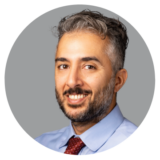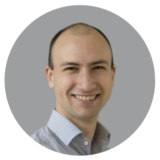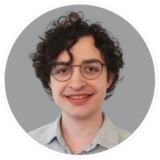Virtual Event
The Spatial Biology Week™ 2023
Discover new avenues and angles for accelerating scientific research
2-6 October 2023
FREE REGISTRATION
ONLINE
Event agenda
What will the future of spatial biology look like? From the way hypothesis are generated and multiomic data are collected to advance drug discovery and develop targeted treatment, the new spatial paradigm has opened up new avenues and angles for accelerating scientific research.
The Spatial Biology Week™ represents a unique opportunity for the scientific community to connect with and learn from world-class experts. This 5-day virtual meeting explored a broad spectrum of topics from various research areas, showcasing spatial biology’s far-reaching and transformative impact.
Watch the talks on-demand. Registration is free, check the full event agenda below.
The Spatial Biology Week™ speakers list includes:
- Moran Amit, MD, Ph.D. – Assistant Professor, MD Anderson Cancer Center
- Idris Boudhabhay, MD – Ph.D. Candidate, Centre de Recherche des Cordeliers, Unité INSERM UMRS1138, Department of Nephrology and Kidney Transplantation, Necker Hospital
- Michaeline Bunting, Ph.D. – Sr. Director Product Management and Marketing, Bio-Techne
- Jared Burks, Ph.D. – Core Facility Director, MD Anderson Cancer Center
- Michael DeCuypere, MD, Ph.D. – Director of Translational Research and Clinical Trials in Neuro-Oncology & Assistant Professor of Neurological Surgery, Northwestern University
- Pedro Espinosa Gonzalez, M.Sc. – Field Applications Scientist, Indica Labs
- Sami Farhi, Ph.D. – Group Leader, Klarman Cell Observatory at the Broad Institute of MIT and Harvard, Optical Profiling Platform
- Sammy Ferri-Borgogno, Ph.D. – Instructor, MD Anderson Cancer Center
- Bora Gurel, MD, Ph.D. – Clinician Scientist and Histopathologist, Institute of Cancer Research
- Mauro Gwerder, M.Sc. – University of Bern
- Amy B. Heimberger, MD, Ph.D. – Vice Chair for Research and Professor, Northwestern University
- Kelly Hunter, M.Sc. – Chief Scientific Officer, ProPathUK
- Joanna Kowal, Ph.D. – Senior Scientific Affairs Manager, Lunaphore Technologies
- Catalina Lee Chang, Ph.D. – Assistant Professor at Northwestern University, The Feinberg School of Medicine
- James R. Mansfield – SVP Research Business Development, Visiopharm
- Jimin Min, Ph.D. – Postdoctoral Fellow, Maitra’s lab, MD Anderson Cancer Center
- Hinda Najem, MD, Ph.D. – Postdoctoral Fellow, Heimberger’s lab, Northwestern University
- Matthew Pugh, MD, Ph.D. – Jean Shanks Pathsoc Intermediate Fellow and Associate Clinical Professor, University of Birmingham
- David R. Raleigh, MD, Ph.D. – Associate Professor, University of California San Francisco
- Albert Santamaria Martinez, Ph.D. – Scientist, Oricchio’s lab, Ecole Polytechnique Fédérale de Lausanne
- Denis Schapiro, Ph.D. – Group Leader, University Hospital Heidelberg
- Farzad Sekhavati, Ph.D. – Project Manager Tissue Analytics, Lunaphore Technologies
- Sheila Singh, MD, Ph.D., FRCS(C) – Professor of Surgery and Biochemistry, Chief Pediatric Neurosurgeon at McMaster Children’s Hospital, Hamilton Health Sciences, Director of McMaster Centre for Discovery in Cancer Research
- Adam M. Sonabend Worthalter, M.D. – Associate Professor of Neurological Surgery, Northwestern University
- Antonio Sorrentino, Ph.D. – Head of Translational Strategy, Lunaphore Technologies
- Florian Wünnemann, Ph.D. – Postdoctoral Fellow, Denis Schapiro’s lab, Heidelberg University, Heidelberg University Hospital, Bioquant
Access the full agenda and speakers bio below.
DISCLAIMER: Participation in the event is the sole decision of the speakers. The presentations are based on their personal experience and do not imply any official endorsement by their institutions.
What is the registration cost? Is it necessary?
Registration to access the recordings of the event is required and it is free. Upon registration, you will have access to the webcast.
Have all talks been recorded?
Some talks were streamed only during the The Spatial Biology Week™ and are not available on-demand.
I need support to complete my registration/access the talks
To receive support, please email [email protected]
I have a question regarding the event
Please send your request to [email protected]
October 2
Dissecting tissue and diseases: multimodal approaches for spatial analysis
Jared K. Burks
Marco Cassano
Sammy Ferri-Borgogno
Sheila Singh
Matthew Pugh
Michaeline Bunting
Integrating the spatial omics approach with other multimodal techniques can enable a more comprehensive view of cell to cell interaction, tissue architecture, and pathological conditions. This session covers innovative research projects and their related methods that integrate multiple technologies from single cell to spatial multiomics and multimodal imaging. These approaches will enhance understanding of biological mechanisms underlying disease development, progression, and therapeutic resistance.
Watch now →
Speakers

Marco Cassano, Ph.D.
Head of Scientific Affairs
Lunaphore

Jared K Burks, Ph.D.
Professor, Co-Director of the North Campus Flow Cytometry & Cellular Imaging Core Facility
The University of Texas MD Anderson Cancer Center
Why does spatial organization of cells matter? Can these data help us to better understand disease progression? We need to explore the niche or neighborhood in the multicellular system we want to study. Since proximity speaks to cellular activity, spatial organization of cells will certainly play a role in modulating clinical outcomes. However, this type of complex study cannot be performed due to the shortage of tools to analyze single cell with spatial context in the multicellular system such as cancer. A tumor cell clearly recognizes the importance of its neighborhood and restructures the neighborhood to meet its needs for its own benefit. What if we compare this interaction to a model system developed by our own behaviours? How do we decide where we want to live in a city?
With higher-plexed imaging, we can now characterize spatially resolved mRNA (spatial transcriptomics). and protein (spatial proteomics) simultaneously. An analogy to this is that we can tell whether an individual has enough money to buy food to live in a particular neighborhood of a city. These points bring us back to another aspect, tissue heterogeneity. To avoid redundancy, we need to analyze a single tissue section using as many omics platforms as we can so that one unique and reliable city map can be generated
Sorry, this talk is not accessible on-demand.
Speaker

Sammy Ferri-Borgogno, Ph.D.
Instructor
The University of Texas MD Anderson Cancer Center
Glioblastoma (GBM) is the most common primary adult brain tumor, with standard-of-care therapy inevitably leading to therapy resistance in 96% of patients, who relapse with incurable disease. This talk will review the biological profile of treatment-refractory glioblastoma, and discuss the application of an integrative multi-omics target discovery platform for human GBM which incorporates DNA cellular barcoding, glycocapture profiling of the cell surface proteome, RNA sequencing, single-cell sequencing and genome-wide CRISPR screening of primary and recurrent GBM. We will introduce a scientific program designed to address our gap in knowledge of the spatial heterogeneity of GBM, which is built together with patients and families who chose to participate in an innovative rapid autopsy GBM donor program.
Watch now →
Speaker

Sheila Kumari Singh, M.D., Ph.D., FRCSC
Pediatric Neurosurgeon, McMaster Children's Hospital
Professor of Surgery, Professor of Biochemistry and Biomedical Sciences, Division Head, Neurosurgery, Hamilton Health Sciences
Director, Centre for Discovery in Cancer Research, McMaster University
Senior Canada Research Chair in Human Cancer Stem Cell Biology, University Scholar, and Chair, McMaster College of Health Inventors
McMaster Children's Hospital | Hamilton Health Services | McMaster University | McMaster College of Health Inventors
Whilst the peripheral immune response to COVID-19 infection is well characterised, less is known about the tissue response in the lungs of affected patients. We conducted a multi-omic investigation in post-mortem lung tissue from fatal COVID-19 infection comprising bulk Quantseq RNA sequencing, spatial transcriptomic profiling on the Nanostring GeoMx, multiplex immunohistochemistry on the Lunaphore COMET™ and in-situ transcriptomcics with RNAscope. We found the SARS-CoV-2 virus was progressively cleared in more temporally advanced disease. Furthermore, collagen VI was found to be transcriptionally up-regulated by bulk sequencing and within the interstitium on spatial transcriptomics. These findings were supported by multiplex immunohistochemistry at a proteomic level which showed fibrillar deposition of collagen VI in the interstitum. To validate these findings clinically, we looked at blood markers for collagen VI synthesis and degradation by ELISA in a cohort of severe and mildly infected COVID-19 patients. Blood markers of collagen VI synthesis (PRO-C6) was significantly predictive for mortality in hospitalised (p = 0.0065) and intensive care (p = 0.028) COVID-19 patients. Overall, blood PRO-C6 levels, based on increase interstitial lung deposition, could help identify high-risk of patients enabling better treatment stratification. The study also demonstrates the power of post-mortem investigation and spatial profiling in elucidating clinically relevant insights into complex disease phenomena.
Watch now →
Speaker

Matthew Pugh, MD, PhD, FRCPath
Jean Shanks Pathsoc Intermediate Fellow and Associate Clinical Professor
University of Birmingham
RNAscope in situ hybridization (ISH) technology is powerful method for detecting RNA expression with single molecule sensitivity in spatial and morphological context. Backed by over 8,000 peer reviewed publications, RNAscope technology enables visualization of the widest range of diverse RNAs commercially available.
In this presentation, Michaeline Bunting, PhD. from the Spatial Biology Division at BioTechne will discuss RNAscope™ multiomic spatial applications and how they can be used to uncover new insights into health and disease and advance therapeutic development. Learn more about how RNAscope works and future directions to automate RNAscope on the Lunaphore COMET™ system to develop the first fully automated same-slide spatial multiomics solution.
Watch now →
Speaker

Michaeline Bunting, Ph.D.
Sr. Director, Product Management Spatial Biology Division
Advanced Cell Diagnostics, a BioTechne brand
October 3
Navigating the brain architecture with spatial cell profiling
Amy B. Heimberger
Hinda J. Najem
Moran Amit
Adam M. Sonabend
David R. Raleigh
The brain is a complex organ that exhibits cellular and molecular heterogeneity within and between brain regions. This session features cutting edge research projects where spatial biology has been used to interrogate the brain and gather previously unknown insights. The discussions emphasize the field’s transformative impact on advancing knowledge of brain function and its diseases.
Watch now →
Speaker

Amy B Heimberger, M.D., FAANS, Ph.D.
Jean Malnati Miller Professor of Neurological Surgery, Vice-Chair for Research in the Department of Neurological Surgery at Northwestern University
Scientific Director of The Malnati Brain Tumor Institute, and the Interim Associate Director of Translational Research of the Robert H. Lurie Comprehensive Cancer Center
Northwestern University | Robert H. Lurie Comprehensive Cancer Center
To increase the throughput of spatial profiling of the human central nervous system (CNS), a CNS-specific library of 100+ markers with an associated analysis platform was developed and validated using the Lunaphore COMET™. Optimizing antibody concentrations, cycle order, and standard operating procedures, while managing subsequent image analysis with background and autofluorescence subtraction, have allowed for the visualization of molecular signaling at the subcellular level. Our approach is project-driven, from onboarding projects to interrogation sessions with investigators, with the associated panels customized to each specific scientific question. This strategy can be used to validate data such as single-cell sequencing or for novel discovery and hypothesis generation.
Watch now →
Speaker

Hinda Najem, M.D., Ph.D.
Postdoctoral Research Fellow
Northwestern University
Over the past decade, emerging technologies have enabled investigators to begin to bridge the gap between cancer and neuroscience research to unveil the interactive roles of nerves in cancer. We are now beginning to define how the nervous system contributes to cancer initiation, growth, spread, recurrence, and even resistance to oncologic therapeutic strategies. Indeed, neuromodulation with both genetic and pharmacological approaches has been shown to affect not only tumor growth but also antitumor immune response. Collectively, studies have demonstrated a significant and pressing need to recognize cancer neuroscience interplay as a hallmark of cancer to 1) establish the neoneurogenic process as a highly relevant therapeutic target for both the prevention and treatment of cancer, 2) foster interdisciplinary cross-talk among experts in cancer biology and neuroscience, which have traditionally progressed along parallel paths, and 3) integrate human variables such as biological sex, age, race, and gender as underlying factors that can impact cancer neuroscience.
This session introduces the current viewpoint of burgeoning cancer neuroscience field and discusses the most seminal papers over the last 10 years as well as promising up-and-coming directions of the field towards its establishment as a hallmark of cancer and implement it as a therapeutic approach in clinical oncology.
Watch now →
Speaker

Moran Amit, M.D., Ph.D.
Assistant Professor, Head and Neck Surgery
The University of Texas MD Anderson Cancer Center
Dr. Amit was recruited to the Department of Head and Neck Surgical Oncology at MD Anderson in April 2019 and has an active research laboratory focusing on cancer-related neurogenesis and axonogenesis and on the role of neuro-immunology in cancer. One exciting finding of Dr. Amit’s lab involved describing a mechanism by which head and neck tumors can reprogram adrenergic signaling in neurons and the effect of targeting the peripheral nervous system on cancer initiation and progression. This will serve as a basis for combining treatments targeting the nervous system with other therapies, such as immunotherapy, in the treatment of head and neck cancers.
Dr. Amit is continuing his work by building a team to study how the neural microenvironment affects responses to chemotherapy and immunotherapy in patients with non-melanoma skin cancer and other cancers, and to develop novel strategies to combat resistance to these therapies.
Talk abstract N/A.
Watch now →
Speaker

Adam M. Sonabend, M.D.
Associate Professor of Neurological Surgery
Northwestern University
Intratumor heterogeneity underlies cancer evolution and treatment resistance, but targetable mechanisms driving intratumor heterogeneity are poorly understood. Meningiomas are the most common primary intracranial tumors and are resistant to all current medical therapies. High-grade meningiomas cause significant neurological morbidity and mortality and are distinguished from low-grade meningiomas by increased intratumor heterogeneity arising from clonal evolution and divergence. Here we integrate spatial transcriptomic and spatial protein profiling approaches across high-grade meningiomas to identify genomic, biochemical, and cellular mechanisms linking intratumor heterogeneity to molecular, temporal, and spatial evolution. We show divergent intratumor gene and protein expression programs distinguish high-grade meningiomas that are otherwise grouped together by current clinical classification systems. Analyses of matched pairs of primary and recurrent meningiomas reveal spatial expansion of sub–clonal copy number variants underlies treatment resistance. Multiplexed sequential immunofluorescence (seqIF) and spatial deconvolution of meningioma single-cell RNA sequencing show decreased immune infiltration, decreased MAPK signaling, increased PI3K-AKT signaling, and increased cell proliferation drive meningioma recurrence. To translate these findings to clinical practice, we use epigenetic editing and lineage tracing approaches in meningioma organoid models to identify new molecular therapy combinations that target intratumor heterogeneity and block tumor growth. Our results establish a foundation for personalized medical therapy to treat patients with high-grade meningiomas and provide a framework for understanding therapeutic vulnerabilities driving intratumor heterogeneity and tumor evolution.
Sorry, this talk is not accessible on-demand.
Speaker

David R. Raleigh, M.D., Ph.D.
Associate Professor
Robert and Ruth Halperin Endowed Chair in Meningioma Research
Brain Tumor Center Principal Investigator and Preclinical Therapeutics Core Director
Departments of Radiation Oncology, Neurological Surgery, and Pathology
University of California San Francisco
October 4
Spatial biomarkers for translational research
Antonio Sorrentino
Idris Boudhabhay
Kelly Hunter
Sami Farhi
Jimin Min
Catalina Lee-Chang
Spatial biology techniques have become highly valuable in biomarker development, where bulk analyses have reached a bottleneck. Researchers are pursuing novel biomarker signatures to better understand diseases and stratify patients. This session showcases real world examples of spatial biology studies to identify clinically relevant biomarkers. These case studies demonstrate how the identification and characterization of spatial biomarkers are fundamental for personalized medical and diagnostic approaches.
Sorry, this talk is not accessible on-demand.
Speaker

Antonio Sorrentino, Ph.D.
Head of Translational Strategy
Lunaphore Technologies
With the advent of complement therapeutics, it becomes critical to understand whether and how complement contributes to the pathophysiology of diseases affecting the kidney to provide personalized treatments. During the talk, we will illustrate how we developed an ultra-high in situ Complementomics approach using the COMET™ Imager. We combined the staining for complement proteins, receptors and activation fragments with tissue structure markers and markers for phenotyping of the immune infiltrate. Through this innovative approach, we successfully untangled the intricacies of complement activation within diverse kidney diseases and kidney cancers, as well as its interconnectedness with the infiltration of immune cells. Ultimately, this method sheds light on the role of complement in various disorders, opening doors to the discovery of novel biomarkers and therapeutic strategies.
Watch now →
Speaker

Idris Boudhabhay, M.D.
Senior Nephrologist, Department of Nephrology and Kidney Transplantation, Necker Hospital
PhD Student, Team “Inflammation, Complement and Cancer”, Centre de Recherche des Cordeliers, INSERM
Necker Hospital | Centre de Recherche des Cordeliers, INSERM
High dimensional morphological profiling allows the generation of unbiased fingerprints indicative of cell states, and allows identification of genes lying on common pathways or drugs acting via common mechanisms of actions. We have developed a system for pooled genetic screening of iPSC-derived neurons which combines peptide barcoding of short guide RNAs for CRISPR perturbation; a panel of antibodies for morphological and cell state characterization via highly multiplexed immunostaining; and subsequent feature extraction pipelines to reduce the data dimensionality into useful feature vectors. Our pilot experiments validate computationally predicted interactions between genes related to Huntington’s disease.
Sorry, this talk is not accessible on-demand.
Speaker

Sami Farhi, Ph.D.
Director of the Optical Profiling Platform
Broad Institute of MIT and Harvard
Intraductal papillary mucinous neoplasms (IPMN) of the pancreas are bona fide precursor lesions of pancreatic ductal adenocarcinoma (PDAC). The most common subtype of IPMNs harbors a gastric foveolar-type epithelium, and these low-grade mucinous neoplasms are harbingers of IPMNs with high-grade dysplasia and cancer. To explore the molecular underpinning of gastric differentiation in IPMNs, we conducted spatial transcriptomics on a cohort of IPMNs, followed by hyper-plex cyclic immunofluorescence staining using the COMET™ platform and cross-species validation studies. Our study identifies NKX6-2 as a key transcription factor driving indolent gastric differentiation in IPMN pathogenesis.
Sorry, this talk is not accessible on-demand.
Speaker

Jimin Min, Ph.D.
Postdoctoral Fellow
The University of Texas MD Anderson Cancer Center
Clinical studies with immune checkpoint inhibitors (ICI) have shown limited response rates, yet several case reports have shown encouraging responses and outcomes. Novel, combined modality treatments, including immunotherapies, have the potential to be effective in chordoma, a disease where conventional cytotoxic chemotherapy and radiotherapy to date have failed to provide meaningful long-term control. To optimize an immunotherapy intervention, we need a comprehensive understanding of the immune composition, the dynamic communication between cells, and the expression of immune checkpoint molecules of chordomas. Here, we comprehensively characterized the immune landscape of chordomas by employing high throughput methods such as single-cell transcriptomics (scRNA-seq), and single-T–cell/B–cell receptor sequence. Our data show that chordomas induce tumor-reactive B- and T-cell immunity inside and outside (blood) the tumor. Spatial transcriptomics and proteomics revealed that most T cells localize in the peritumoral areas, with a broad expression of PD-1 and CTLA-4, and exhausted phenotype. Investigating the cell-cell interactions driving tumor-mediated T-cell exhaustion, we identified M2 tumor-associated macrophages and a plasma cell phenotype-like subset upregulating TGFB and IL10 expression, referred to as regulatory B cells (Bregs). Thus, immunosuppression governs the chordoma microenvironment. However, the existence of tumor-reactive T cells in the circulation that are not subject to the tumor immunosuppressive suggests that a neoadjuvant ICI intervention is preferred over an adjuvant intervention. Using DNA methylome, we established a fast and easy way to define the immune composition of the tumor from biopsies. Thus, the DNA methylome of biopsies might be an effective way to stratify and select patients is a high probability to respond to neoadjuvant ICI.
Sorry, this talk is not accessible on-demand.
Speaker

Catalina Lee-Chang, Ph.D.
Assistant Professor of Neurological Surgery
Feinberg School of Medicine - Northwestern University
October 5
From pixels to biological insights: the key role of image analysis
Denis Schapiro
Florian Wünnemann
Mauro Gwerder
Farzad Sekhavati
Pedro Espinosa Gonzalez
James R. Mansfield
As the number of biomarkers detected by spatial biology techniques increases, the complexity of images escalates, and their interpretation becomes more challenging. Quantitative data must be extracted from images to infer cellular interactions and dependencies. Speakers showcased novel workflows to transform hyperplex images into biologically relevant datasets that can address basic and translation research questions.
Sorry, this talk is not accessible on-demand.
Speaker

Denis Schapiro, Ph.D.
Group Leader, Institute for Computational Biomedicine and Institute of Pathology
University Hospital Heidelberg
Highly-multiplexed imaging technologies enable the acquisition of dozens of markers generating large amounts of data in the process. The streamlined processing of such complex data through steps like image preprocessing, single cell segmentation, quantification of marker intensities and cell phenotyping poses a major challenge. In this talk, I will highlight how we utilized MCMICRO to process terabytes of Lunaphore COMET™ data with a focus on myocardial infarction.
Sorry, this talk is not accessible on-demand.
Speaker

Florian Wünnemann, Ph.D.
Postdoctoral Researcher, Institute for Computational Biomedicine and Institute of Pathology
University Hospital Heidelberg, Schapiro Group
Tumor buds are clusters of up to 4 tumor cells that detached themselves from the main tumor. They are a powerful prognostic factor in colorectal cancer among others. However, they are also notoriously cumbersome to annotate and investigate, as there currently exist no phenotypic marker that differentiates them from other tumor cells.
We’ve built a pipeline to automatically detect tumor buds on COMET™ images as well as assess their expression patterns. I will discuss problems and lessons learned when working with sequential immunofluorescence images, and how it is important to take the biological context of the research question into account.
Sorry, this talk is not accessible on-demand.
Speaker

Mauro Gwerder
PhD Candidate
Institute of Tissue Medicine and Pathology, University of Bern
Spatial biology enables the interrogation of tissue architecture on a single-cell level. Transforming the rich image output into meaningful quantitative data is the next significant hurdle on the path to fully comprehend and interpret the intricate imaging data. HORIZON™ is an image analysis software tailored to COMET™ hyperplex immunofluorescence images. It seamlessly extends the COMET™ workflow, smoothly handling the large data sets. With its straightforward and user-friendly approach, this analysis tool supports cell-based analysis and provides researchers with a toolset for early and high-level assessment of data in a hyperplex immunofluorescent image. We will walk through image analysis workflow on HORIZON™ from a COMET™ image to biological insights.
Watch now →
Speaker

Farzad Sekhavati, Ph.D.
Project Manager, Image Data Scientist
Lunaphore Technologies
- Years of experience as image data scientist
- PhD in biophysics
- Masters in micro-fluidics and nanotechnology
The tumor microenvironment (TME) is the seat of multiple cell interactions, including tumor cells, immune cells, stromal cells, and others. The identification of the markers expressed, and their spatial distribution can help not only to establish a prognosis of the disease, but also to direct therapeutic selection.
In this presentation, Mr. Pedro Espinosa Gonzalez presents how the HALO® and HALO AI platform can be used to analyze images of immuno-oncology panels encompassing a highly multiplexed biomarker panel from the COMET™ platform.
Watch now →
Speaker

Pedro Espinosa
Field Applications Scientist
Indica Labs
Understanding the immune system in solid tissues requires highplex staining, imaging, and analysis for multi-marker cellular phenotypes. We present a comprehensive workflow for highplex images, covering tissue and cell segmentation and cellular phenotyping in a single software package. Visualization templates for marker subsets and pre-trained nuclear segmentation algorithms are reusable and paint-to-train tissue segmentation is easy to perform. Spatial biodistribution metrics, heatmaps and interactive partitioned t-SNE plots can be generated for each tissue type with a minimum of work. This workflow for highplex image analysis enables biologists and immunologists by circumventing the need for expert programming for each specific application.
Watch now →
Speaker

James R. Mansfield
Senior Vice President
Visiopharm
October 6
Success stories from technology adoption to data analysis in spatial biology
Joanna Kowal
Bora Gurel
Michael DeCuypere
Shashwat Tripathi
Albert Santamaria-Martínez
Spatial biology is the new frontier in life sciences. However, despite the great potential of spatial techniques, their adoption remains challenging for many laboratories In this session, attendees will discover how spatial biology enables success. From basic research laboratory to translational research group, success stories stemming from Lunaphore’s Access Lab projects featured their journey in quickly adopting spatial biology and integrating a customized workflow in the field of immunology, immuno oncology, and beyond.
Sorry, this talk is not accessible on-demand.
Speaker

Joanna Kowal, Ph.D.
Senior Scientific Affairs Manager
Lunaphore Technologies
Cancer (PCa) is a predominant male cancer, with rising incidence and progression rates emphasizing the need for effective treatments. Chronic inflammation plays a pivotal role in PCa progression, influencing genetic changes and the tumor environment. This is exacerbated by reactive oxygen species leading to DNA damage, increasing mutation risks, and altering the tumor environment to support growth. Contrary to traditional beliefs, our study of 825 samples revealed significant inflammation in prostate cancer. Using Hyperplex IF techniques, we discerned distinct CD3+ cell patterns in castration-resistant prostate cancer (CRPC), correlating with patient survival. Notably, nodular inflammation patterns hinted at tertiary lymphoid structures (TLSs) fostering immunosuppression. Further analyses differentiated between “hot” and “cold” tumors, and highlighted associations with mature and immature TLSs, potentially indicative of different immune responses. Our findings provide a nuanced understanding of the CRPC immune context, presenting avenues for enhanced immunotherapy and improved patient prognosis in prostate cancer treatment.
Watch now →
Speaker

Bora Gurel, M.D., Ph.D.
Clinician Scientist and Pathologist
The Institute of Cancer Research London
Currently at the Institute of Cancer Research in London, Dr. Gurel's work pivots towards understanding the inflammatory mechanisms associated with castration-resistant prostate cancers (CRPC). His research has led to contributions in several notable publications in the field of prostate cancer.
The immune microenvironment of pediatric gliomas is relatively understudied despite being a leading cause of childhood mortality. Pilocytic astrocytomas (PA) are the most common pediatric glioma and surgical resection is often curative. However, PAs are not always amenable to surgery and can have significant long-term morbidity and mortality. To identify PA patients that may be responsive to immune checkpoint inhibitors and to guide prioritization of available immunotherapeutic treatments, orthogonal immune profiling strategies were used to identify patients that may benefit from the next generation of immune therapeutics.
Sorry, this talk is not accessible on-demand.
Speakers

Michael DeCuypere, M.D., Ph.D.
Director of Translational Research and Clinical Trials in Neurosurgery, Ann and Robert H. Lurie Children’s Hospital of Chicago
Assistant Professor of Neurological Surgery, Feinberg School of Medicine - Northwestern University
Ann and Robert H. Lurie Children’s Hospital of Chicago | Feinberg School of Medicine - Northwestern University

Shashwat Tripathi, M.D.
PhD Candidate
Northwestern University
Non-Hodgkin lymphomas are a very heterogenous group of tumors arising from lymphocytes at different stages of differentiation. In order to reliably anticipate responses to treatment, lymphoma models must preserve the spatial organization and the functional interdependency between malignant and non-malignant cells. However, modeling lymphoma ex vivo is challenging due its highly heterogeneous nature and its intrinsic cellular composition. To address these challenges, we have established a tissue explant culture system for murine and human lymphoma that can potentially be used to assess therapy response in lymphoma patients (personalized medicine) and can help uncover novel aspects of lymphoma biology.
Sorry, this talk is not accessible on-demand.
Speaker

Albert Santamaria-Martínez, Ph.D.
Scientist
Cancer Genomics lab - EPFL
